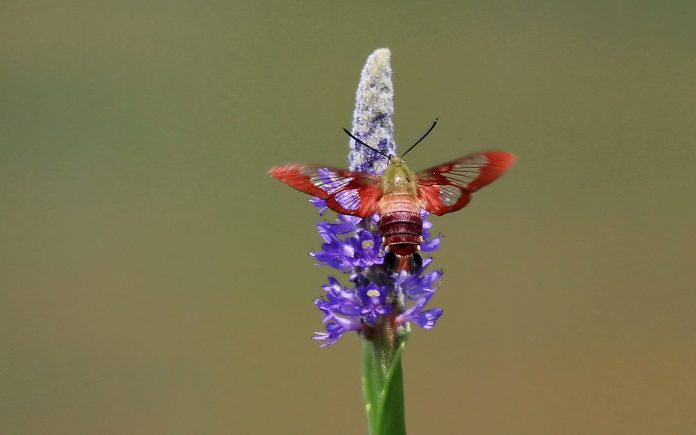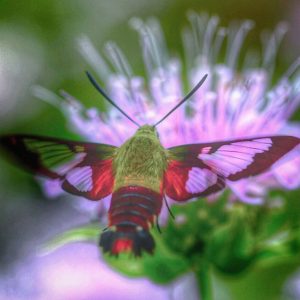
My husband came in to tell me that he saw the biggest hummingbird in the world. I camped out in the garden the next morning. I have a special butterfly garden that attracts so many butterflies, bees, and hornets. You cannot come close to counting the number that visit each morning.
Who Is the Special Visitor, Not a Hummingbird… A Moth!
 When I think of a moth, my vision is an ugly brown small, winged creature that like to get into my pantry. We need to re-think these winged creatures. Some are so beautiful it is like looking through a kaleidoscope of color.
When I think of a moth, my vision is an ugly brown small, winged creature that like to get into my pantry. We need to re-think these winged creatures. Some are so beautiful it is like looking through a kaleidoscope of color.
This special guest is a hummingbird moth. They belong to their own special species group. They are scientifically called Hemaris. Butterflies are called scientifically Lepidoptera.
“Hemaris: Hemara, a Greek word meaning “day,” is one possible explanation for this genus name since these moths are primary diurnal fliers.” These beautiful creatures are large moths that can be brown and drab to beautiful and multicolored. The first impression is that you just saw a unique hummingbird. These beauties fly from flower to flower just as hummingbirds will, then land and partake of the nectar. To read more, click here.
Facts that make Moths like Hummingbirds:
- The moths fly like a hummingbird
- They lay their eggs on flowers.
- These creatures go through a molt cycle.
- The worms on your tomatoes will be moths someday
- They have exceptionally long tongues to reach into flowers for nectar.
- They enjoy the same flowers liatris, beebalm, zinnias
– Jane Slone writes articles on gardening for EllisDownHome.com. Jane grew up in Dallas, and moved with her husband to Ellis County 25 years ago. She opened three flower shops, operated, and eventually sold the shops. She taught Microbiology and Anatomy & Physiology at the college level and retired 26 years later. She loves to garden and has become a Master Gardener. Her joy is teaching others about gardening!






